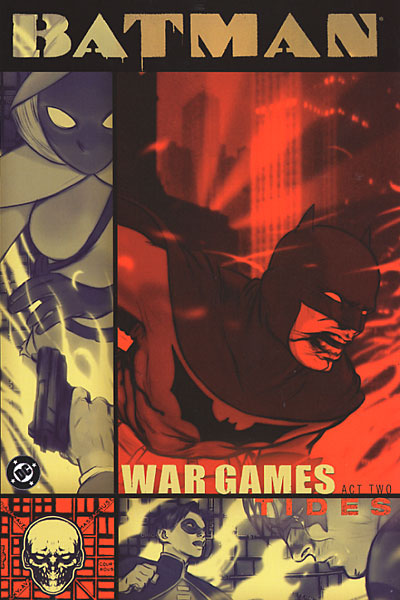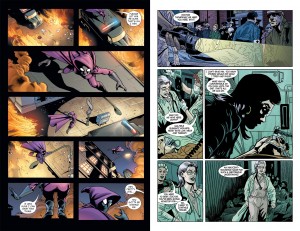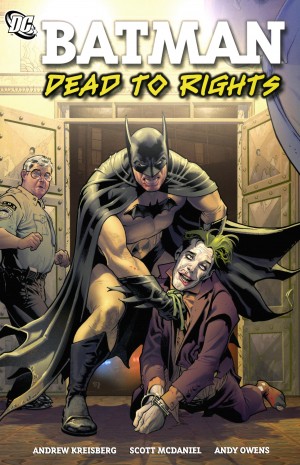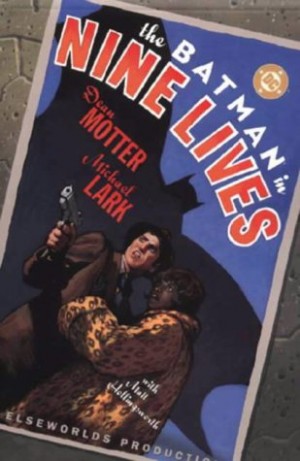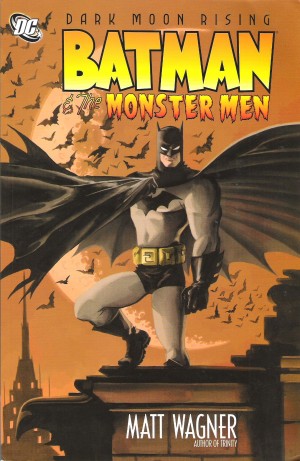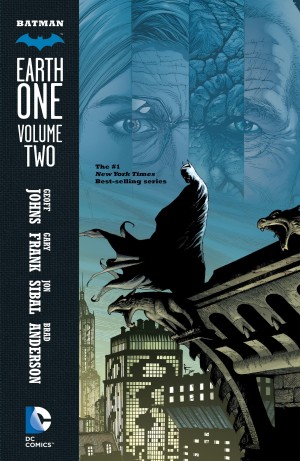Review by Ian Keogh
War Games: Outbreak saw one of Batman’s contingency plans activated without his knowledge and one crucial element absent. The result is the criminal gangs of Gotham at each other’s throats jostling for more influence and territory while the public are caught in the crossfire. Despite the help of Batgirl, Nightwing, Onyx, Oracle and Orpheus, the situation is way beyond Batman’s ability to stop, or even contain, and Catwoman, Spoiler and Tarantula also have a part to play, as does Tim Drake, who’s promised his father he’ll no longer be Robin.
As with Outbreak and the following Endgame, the surprise is that a crossover involving eight different creative teams can progress from one to the next in such a cohesive fashion. Roadbumps are few, and the read is smooth. The opening chapter by Anderson Gabrych and Pete Woods is a smart piece of action thrills, with Woods providing the atmosphere and Gabrych simultaneously escalating plot elements already in play while adding a couple of his own. It ends with a turning point, having resolved very little, but having provided twenty pages of character-driven thrills. Not every writer integrates the necessary plot beats with their own character moments as smoothly, but there’s nothing very much out of step either.
While the cameos from other characters work well, the two key players are Batman and Spoiler. Batman is often pictured looking down on Gotham from above, which is visual allegory open to interpretation. Is he looking down with contempt or in the manner of God? Perhaps it’s some of both based on his actions here. With Spoiler, illustrated on Al Barrionuevo’s sample page left, the prevailing desire is that of repentance. She’s outwith Batman’s control and as such suspense is perpetuated by wondering if she’ll save the day or make matters worse. She’s involved in an extremely brutal battle with a wild card taking advantage of the chaos to make their power play.
Art throughout the series is extremely good, although Mike Huddleston’s pint-sized cartoon Batgirl doesn’t quite work in context. Jon Proctor (sample page right), new to this volume, is worth singling out. He was then a relative newcomer and many of his best pages enter spoiler territory, but if his figures are a little stiff, he has a distinctive way with layouts and there’s some great visual characterisation to his panels.
By the end of the book Batman has realised the gang problem is partly one of his own devising, and appears to have succeeded in alienating even more of Gotham with his high-handedness. It sets up the finale very well.
A decade after the original publication DC reconfigured War Games, combining this book with Endgame and a couple of epilogue chapters as Book Two.
